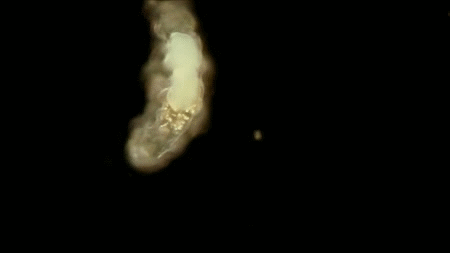Tardigrades (also known as waterbears) are the toughest organism capable of thriving in the most unfavorable conditions on earth and even in the outer space. Tardigrades have been found living in low temperatures (just above the absolute zero), high temperatures (above boiling point of water), can bear high pressure, high ionizing radiations and can even exist in the vacuum of the space. And because of this unique survival skill of the organism, the scientists have classified them as extremophiles i.e. an organism capable on living in the harshest of conditions, which may be lethal to most other forms of life on earth.
Tardigrades are invertebrates organisms usually measuring up-to the 1 mm in size. Found mostly in fresh water, marine or semi-aquatic environment as-well. Their body is tiny, plump and has four pairs of limbs. They consume plants and animal fluids.
Tardigrades are known to thrive without food and water for more than 10 years. When caught in unfavorable dry conditions these organisms shrink in-to a barrel called tun by reducing the water content of the body up-to 3% or less. The process has been widely researched by the scientists and has been termed as anhydrobiosis. When in low temperature the tardigrades survive using a method known as cryobiosis, in which the water present in cells of the organism freezes. Tardigrades flourish back to grow and reproduce once in favorable conditions.
These unique abilities has made scientists from NASA and Italy to broadly study the Tardigrades and to understand the mechanism which has made possible for the organism to withstand even the most hostile conditions known. How do the sperm, blood, food and seeds are preserved and so can be applied to other large organism. With the help of these organisms, NASA aims to understand how the cells of the organism behave when exposed to the space conditions. In future, these may help in developing a space ecosystem for human establishments in space
Source: ZME Science




